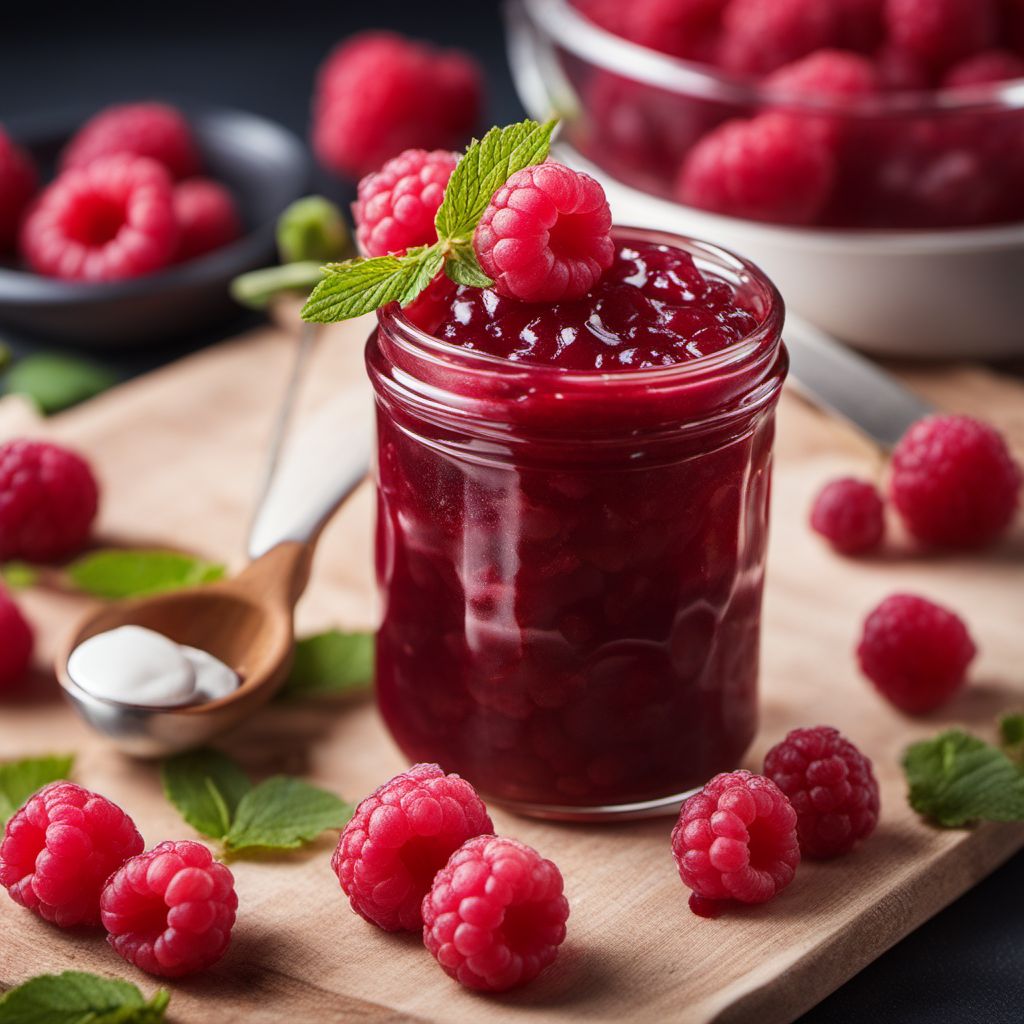
Ingredient
Jam, raspberries
The Essence of Summer
Raspberry jam is a sweet and tangy spread made from ripe raspberries. It has a vibrant red color and a smooth, luscious texture. The flavor is a perfect balance of sweetness and tartness, with the natural essence of raspberries shining through. Raspberry jam is a versatile ingredient that can be enjoyed on toast, swirled into yogurt, or used as a filling for cakes and pastries.
Origins and history
Raspberries have been enjoyed for centuries and are believed to have originated in Eastern Europe. Raspberry jam has a long history and is a popular preserve in many cultures. It is often associated with summer and is made when raspberries are at their peak ripeness. Raspberry jam is a beloved ingredient in British and European cuisines, where it is used in a variety of sweet treats and desserts.
Nutritional information
Raspberry jam is a good source of vitamins and antioxidants. It is low in calories and fat, making it a healthier alternative to other spreads. However, it is important to consume raspberry jam in moderation due to its sugar content.
Allergens
Raspberry jam may contain allergens such as pectin or citric acid, which can cause allergic reactions in some individuals. It is important to read the label carefully and check for any potential allergens before consuming raspberry jam.
How to select
When selecting raspberry jam, look for brands that use high-quality raspberries and minimal additives. The jam should have a vibrant red color and a smooth, spreadable texture. Avoid jams that contain artificial preservatives or excessive amounts of sugar. Opt for organic or homemade raspberry jam for a more natural and flavorful option.
Storage recommendations
To maintain the freshness and quality of raspberry jam, store it in a cool, dark place, such as a pantry or cupboard. Once opened, refrigerate the jam to prolong its shelf life. It is important to use clean utensils when scooping out the jam to prevent contamination. Proper storage will ensure that the raspberry jam retains its flavor and texture for an extended period.
How to produce
Raspberries can be grown in home gardens or purchased from local farmers markets during the summer months. To produce raspberry jam, start by washing and crushing the raspberries. Cook them with sugar and lemon juice until the mixture thickens. Once the desired consistency is reached, transfer the jam to sterilized jars and seal them properly for long-term storage.
Preparation tips
Raspberry jam can be used in a variety of ways in the kitchen. It is a classic topping for toast, scones, and pancakes. Raspberry jam can also be swirled into yogurt, used as a filling for cakes and pastries, or incorporated into sauces and glazes for a fruity twist. It pairs well with both sweet and savory ingredients, making it a versatile addition to any recipe.
Substitutions
Strawberry jam, blackberry jam, or blueberry jam can be used as substitutes for raspberry jam. Each of these jams offers a similar fruity flavor and can be used interchangeably in recipes. However, the substitution may alter the overall taste slightly.
Culinary uses
Raspberry jam is a popular ingredient in a variety of sweet treats and desserts. It is commonly used in jams, jellies, tarts, pies, and thumbprint cookies. Raspberry jam is also a key component in the classic Victoria sponge cake and is often used as a filling for macarons and pastries.
Availability
Raspberry jam is commonly available in supermarkets, grocery stores, and specialty food shops. It is cultivated and produced in many regions around the world, including Europe, North America, and Asia.
More ingredients from this category » Browse all
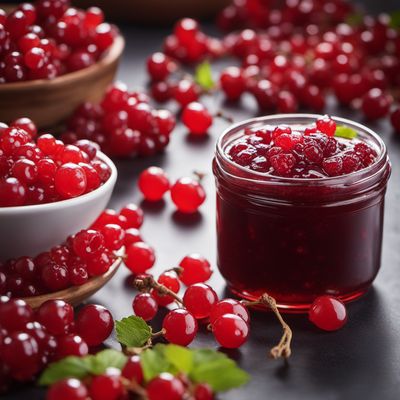
Jam, currants (red)
"Tart and Tangy Delight: Exploring the Vibrant World of Red Currant Jam"
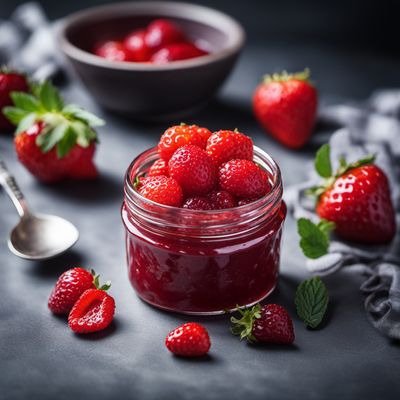
Jam, strawberries
"The Sweet Symphony of Strawberry Jam"

Jam, apricots
The Sweet Preserve

Jam, blackberries
Berry Bliss
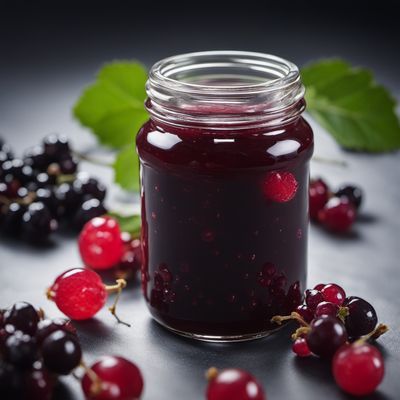
Jam, currants (black)
"The Bold and Tangy Delight: Black Currant Jam"

Jam, mixed fruit
"A Symphony of Fruity Delights: Exploring the World of Mixed Fruit Jam"

Jam, sour cherry
Tangy Delight: Exploring the World of Sour Cherry Jam
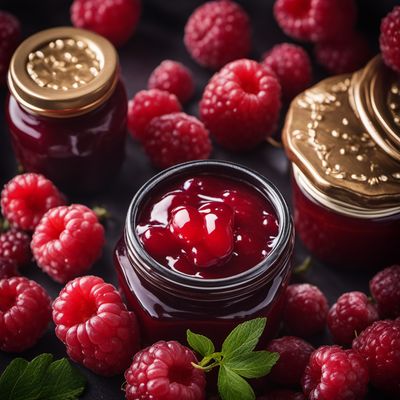
Jam, lingonberry
Tart and Tangy Delight: Exploring the World of Lingonberry Jam

Jam, cranberries
Tart and Tangy Delight: Cranberry Jam

Jam, peaches
Sun-Kissed Delight: Exploring the Sweet Symphony of Peach Jam

Jam, blueberries
Bursting with Blueberry Bliss: The Delightful World of Blueberry Jam

Jam, sweet cherry
"The Luscious Delight: Exploring the Sweetness of Cherry Jam"
Recipes using Jam, raspberries » Browse all

Torta Bertolina - Italian Raspberry Cake
Raspberry Delight: A Sweet Italian Torta Bertolina Recipe

Manchester Tart with a Twist
Heavenly Delight: A Modern Twist on Manchester Tart
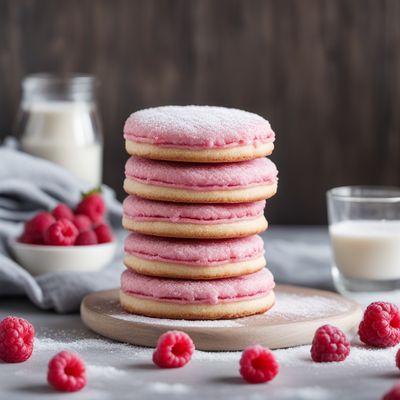
Homemade Iced VoVo Biscuits
Delightful Aussie Coconut Raspberry Biscuits

Budapestbakelse with a Twist
Swedish Delight: A Modern Twist on Budapestbakelse

Engelsaugen - German Almond Cookies
Heavenly Delights: German Almond Cookies - Engelsaugen

Runebergintorttu - Finnish Almond and Raspberry Cakes
Nordic Delights: Almond and Raspberry Cakes from Finland

Monte Cristo Sandwich
Savory Delight: The Ultimate Monte Cristo Sandwich

Balkan Delight Sponge Cake
Balkan Sunshine Cake: A Sweet Delight from the Balkan Peninsula
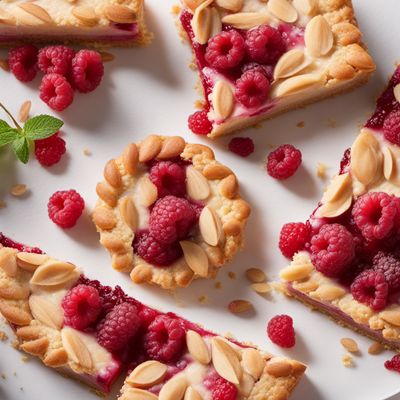
Classic Almond Raspberry Tart
Raspberry Almond Delight

Laskiaispulla - Finnish Cardamom Cream Buns
Heavenly Delights: Finnish Cardamom Cream Buns
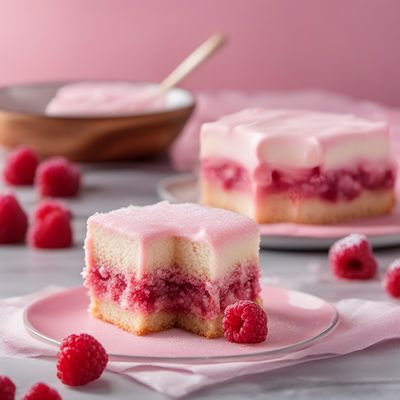
Australasian Iced VoVo Delight
Tropical Twist: A Refreshing Take on Iced VoVo

Swabian Bokkepootjes
Delicate Almond Cookies with a Swabian Twist